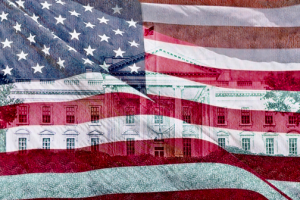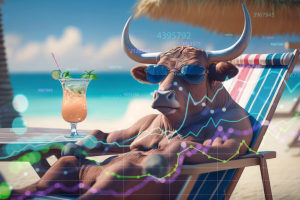
Hello, Reader.
Two new blockbuster films recently hit the big screen: Oppenheimer and Barbie…
One of the films featured an astounding scientific breakthrough that changed the world forever.
The other was about developing the atomic bomb.
Yes, seriously.
Today, let’s “deconstruct” the iconic doll and learn about this true technological success story…
Silicon Valley Insider: “Elon’s Project Omega Enters Final Phase”
After being the first to reveal Elon Musk’s secretive AI project before the AI revolution took the world by storm – Silicon Valley Insider Eric Fry is back again with another urgent prediction about what he calls “Project Omega.”
Only this time, Eric believes we’re on the verge of a coming $3 trillion AI panic. And he says what’s coming just days from now is going to shock the world again.
Last night at 8pm ET, Eric revealed the full details so you can prepare before the panic begins. He also shared his blueprint for turning the panic into 1,000% profit potential.
Click here to watch the replay now.
A Huge Stride in Innovation
To create its first Barbie in 1959, Mattel Inc. (MAT) utilized a revolutionary type of plastic called vinyl PVC.
Throughout the 1950s, versions of this “miracle material” had been circulating in various industrial applications, but Mattel was one of the first companies to apply this new technology to the toy industry.
Mattel combined PVC with phthalate-based “plasticizers” that improved the flexibility and durability of plastic, which made Barbie’s “skin” more human-like. This original Barbie “formula” has evolved over the years to become a creation that contains more chemicals than most junk food.
But the foundational concept has never changed: to produce a pliable, durable doll out of plastic. That simple formula created a worldwide franchise that has sold more than one billion Barbie dolls since 1959 and that continues to generate more than $1 billion per year in sales.
In other words, by applying a new technology in a novel way, the Mattel company created a wealth-generating empire.
Today, many companies are attempting a similar feat with artificial intelligence (AI).
They are attempting to adopt and apply this new technology in ways that will supercharge their growth trajectories, and perhaps build wealth-generating empires of their own.
Mattel was not the very first company to introduce a plastic toy. Two years before Barbie landed on toy store shelves in 1959, Wham-O introduced the plastic “Frisbee” and “Hula-Hoop.” The following year, Sweden’s Lego company began selling its famous plastic building blocks in the United States.
But Mattel’s plastic toy was different. Barbie was not rigid like a Frisbee or a Lego block; she was a supple, pliable plastic toy. In other words, Mattel applied a new technology in a novel way.
Behind the Scenes
Now, technology inventers rarely leave multimillion-dollar, or multibillion-dollar, estates to their heirs.
Technology appliers, however, often do. For example…
- Cornelius Vanderbilt didn’t invent the railroad… and neither did Collis Huntington. But both of these “railroad men” left behind billion-dollar fortunes in today’s dollars.
- Henry Ford didn’t invent the internal combustion engine.
- Charlie Chaplin didn’t invent the motion picture.
- Oprah Winfrey didn’t invent television or even the talk show.
- Bill Gates didn’t invent the personal computer.
- And of course, Jeff Bezos didn’t invent the Internet.
Show me a technological empire, and I’ll show you someone who creatively applied a breakthrough technology – or who integrated a breakthrough technology with existing ones. And they’re almost never the people who actually invent these things.
Technology is simply a tool, until somebody figures out a novel way to use it… just like Mattel’s Barbie dolls. Artificial intelligence is merely the newest tool in the technology tool kit.
It is a pretty cool tool, but it is just a tool until somebody does something amazing with it.
In the right hands, this technology could become transformational. Those are the hands I want to find as an investor.
I want to find the companies that are completely transforming themselves by doing what others are not – by adopting and applying AI to their processes in significant, if not transformational, ways.
I believe I’ve found the tip of the iceberg on these exact sort of plays – so much so that I gave one of my top picks in this space away for free last night at The Coming $3 Trillion AI Panic event.
And if you missed last night’s event, not to worry. You can catch a replay here.
And you’ll want to do it soon because during this event, I go over…
- What this AI panic means for you…
- If we’ve seen anything remotely like this before…
- And what you can do about it.
Watch the replay now – it won’t be available for much longer.
Sincerely,
 Eric Fry
Eric Fry
Editor, Smart Money






